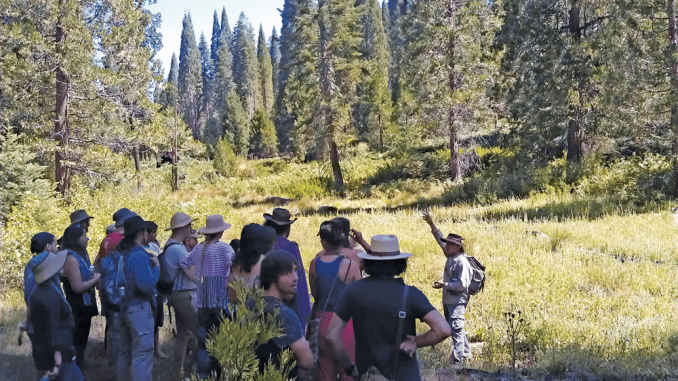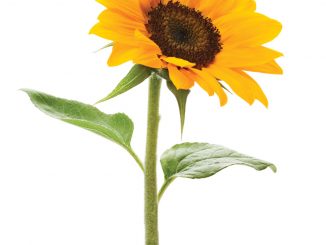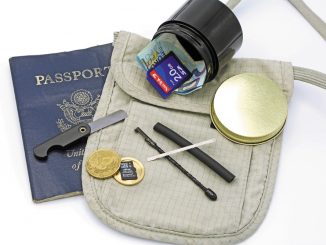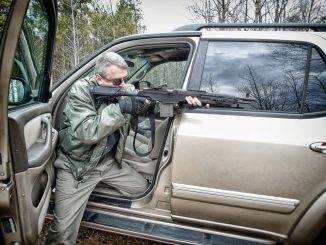
If You’re Willing to Learn, Nature is Willing to Teach You.
When I was a child, I never thought I’d be doing what I do or living the lifestyle that I live. Little did I know that from early on, I was being groomed for this life.
The road has been long and often rough. Thankfully, I had some really good teachers along the way, with perhaps the very best teacher—and maybe also the cruelest—being the environment itself. Mother Nature can be a very demanding taskmaster.
Early on, I drew upon the lessons learned by my Native American ancestors, trying to absorb as much as I could. I made it a point to listen to the oral stories and read those that had been written down, hoping to glean what bits of information I could use.
Thankfully, my mother was a healer, and she was able to teach me about many healing plants. I asked a lot of questions—almost to the point of being a pest. I was quick to learn that if I’d just shut my mouth and watch and listen, I’d be better off. The lessons would come to me as they were needed.
A Native elder once told me, “Nobody knows everything, but everyone knows something.” As I’ve grown older, I’ve found this to be true. I don’t know everything, and I’m still constantly learning.
There’s something about just sitting in the forest, field or along a lake. If you just sit, relax, slow your breathing and make no sound, the world comes alive and reveals valuable lessons. This was a “trick” my mother taught me long ago, before I ever carried a rifle or shotgun into the field. If you’re able to do this, the animals will go about normal activities as if you aren’t even there.
You’ll notice the trails along which deer and turkey travel. Do they come out in the morning or in the afternoon? Where and when do they roost or bed down? What are they eating? All of this is vital information to know when it comes time to fill your freezer. The information gathered also gives you a baseline to draw upon when you travel to different areas.
As you make your way to your “quiet” spot, your eyes should always be moving, observing everything within your field of vision. What kinds of plants are growing in this area? Are any of them edible or possibly medicinal plants? Swampy areas might yield blueberries, cranberries, cattails or other useful plants. Drier spots might have blackberries, raspberries or strawberries. Moist areas will often yield fiddleheads (the edible young shoots of ferns) in the early spring. Groves of maple and birch trees will provide a source of sap that can be turned into syrup while the snows of February and March are still on the ground.

Both the blossoms and the pads of the prickly pear cactus are edible … with a little work.

The author was successful here because he knew what type of fish to look for, the most likely places to find them and the best gear to use to catch them.
With experience, you’ll be able to predict the weather with reasonable accuracy. This is good to know, because the last thing you want to happen is to be caught in a storm miles away from shelter. Observe the sky and look at the clouds. Are they storm clouds or fair-weather clouds? Feel the breezes and winds. Are they moving toward or away from you? How fast are they moving?
These are all important things you’ll learn from the environment, if you’re patient enough to observe it and smart enough to interpret it.
I feed my family with the game and fish I harvest and the fruit and greens I collect from the wild. Because of that, I’ve learned that it pays to listen to the advice of those whom I trust. These people have information on where the best berry patches are, where the “hot” trout pools are and so forth. There are many people out there, both young and old, who know much more than I do about many things. I’d be a fool not to listen to them! By listening and keeping an open mind, you just might find a more effective way to get the job done.

Christopher Nyerges, noted self-reliance instructor, ASG contributor and friend of the author, leads a class in the Southern California hills. Photo courtesy of Christopher Nyerges
It would be impossible to list all the people who’ve helped guide me down this path that I walk, but I’ll list some.
Obviously, my parents are at the top of my list. My mother taught me about medicinal plants, how to sew and how to cook. She also taught me how to hunt, fish and track wildlife. A renowned local fisherman, Jack Hanley, taught me how to use a fly rod and how to properly stalk trout. Friends Stan Beck and Mark Goddard shared “hot” fishing holes and hunting areas.
The list could go on and on, but you get the point. You have similar resources of your own. Many people have shared their knowledge with me. So, the bottom line is to listen and observe those who’ve “been there and done that.”

Yucca is a plant that gives you a ton of resources, so it’s a good idea to keep an eye out for it when you’re in an environment where it’s likely to grow.

This scrape shows you that animals, most likely a food source, are in the area. Your job is to learn which animal made the scrape so you can successfully pursue it.
Making mistakes is one of the best teachers of valuable lessons. We all make mistakes, but those who learn from their mistakes will benefit the most.
Unfortunately, you sometimes only get one chance; and, if you make a big mistake, it could cost you your life.
While in Florida, I heard the story of a young boy who was visiting with his parents from out of town. For some reason, the little boy reached into a shrub. Nobody realized there was a small rattlesnake curled up in the branches of the shrub. When the boy reached in, the snake struck.
Luckily for the boy, there were people there who knew what to do: They quickly put a tourniquet on the boy’s arm and rushed him to the hospital, where he made a full recovery. That was nearly a deadly mistake; and it goes to prove that it only takes one mistake to be your last. This was a lesson learned by all who were involved, although it was the little boy who learned it the hard way.
Of the many mistakes I’ve made, the one that sticks out the most in my mind happened when I was a kid. I was looking at mushrooms, trying to figure out which of them was edible (or not). I found one that had a bite taken out of it, so I figured it would be safe. It wasn’t. I made it home, but I was in bad shape. Thankfully, my mother’s healing skills kicked in, and she knew what to do. Due to her efforts, although I was sick, I survived.

Christopher Nyerges, noted self-reliance instructor and author, leads a class in the Southern California hills. (Photo: Christopher Nyerges)

Unlike the arid Arizona landscape, this area in Florida gives you water, food and materials for survival.
The lesson learned here is not to eat anything unless you’re totally sure it’s safe. Even then, to be certain, I always consult one of the many good books available on the subject (see the ‘Resource Books’ sidebar below).
Learning vital survival lessons doesn’t happen overnight. No single book will teach you everything, although the better ones are valuable tools. Nothing replaces getting out there, making mistakes and paying attention.

Christopher Nyerges with one of his School of Self-Reliance students. Classes such as these taught by Nyerges are past 0f a great path to gain valuable knowledge.

This deer print tells the author a great deal: It gives him an idea of the animal’s size and, along with other prints, tells him the direction in which it’s heading and how long it’s been since it was here. This happened to be a fairly large deer.

These tracks tell the story of a bobcat that’s hunting hares. Identifying and understanding these signs tell the author a great deal about the woods he’s hunting.

This is potentially bad news—and a good time to seek shelter!

Watching and listening to the lessons taught by the environment enabled the author to track down this deer in Kentucky.

Paying attention to a prey’s habits and understanding its habitat allowed the author to catch this striped bass.

This storm off the coast of Florida can mean a lot of trouble if you’re on or close to the water. Learn to pay attention to, and interpret the effects of, the wind’s direction and the clouds.

Jack Hanley is one of the people who taught the author so much about understanding and living off the environment.

One option when cooking bacon-wrapped pheasant is to add some apples for a nice change of pace.

Pheasant breasts, after an hour or so in the oven and with the bacon wraps removed, are ready to eat.

This meal was easy to cook and really hit the spot! Knowing where to source the wild protein made this a delicious dinner.
Many books have been written that cover a wide range of edible and medicinal plants. Here are four books I regard highly and refer to on a regular basis.
A Field Guide to Mushrooms and Their Relatives
For obvious reasons, I use this book a lot. Written by Booth Courtenay and Harold H. Burdsall Jr. and published by Van Nostrand Reinhold Company, this 144-page book covers many aspects of mushrooms and includes color photos. These photos are a big help when trying to identify the mushrooms before you pick them. This book seems to be out of print, but a recent search online turned up many used soft- and hardcover versions.
Written by Christopher Nyerges, a frequent contributor to American Survival Guide, this book leverages his decades of experience as an ethnobiologist and is a must-have if you intend to safely harvest wild plants for either food or medicinal purposes. This book discusses all the known uses, as well as any potential dangers, of the plants included in this book.
MSRP: $24.95
Amazon.com
In another highly respected book by Christopher Nyerges, he concentrates strictly on edible plants that are commonly found in most of North America. That being said, not all the plants mentioned in this text will be found where you live, but this book will give you a good place to start. Along with color photos, the book also includes many useful recipes.
MSRP: $22.95
Amazon.com
First, all wild remedies must be treated with the same care and respect that any medicine you get from the pharmacy gets. In this book, Corinne Martin describes the medicinal uses and proper harvesting of, and the caution needed when dealing with wild medical plants.
MSRP: $19.95
Amazon.com
Editor’s note: A version of this article first appeared in the August, 2020 print issue of American Survival Guide.





Be the first to comment